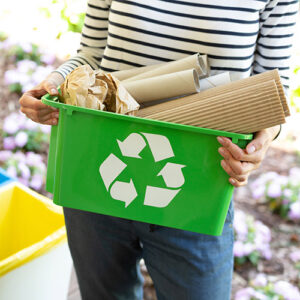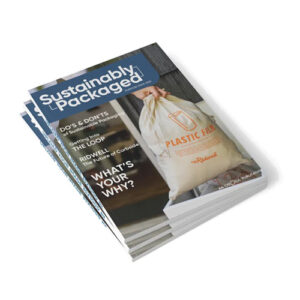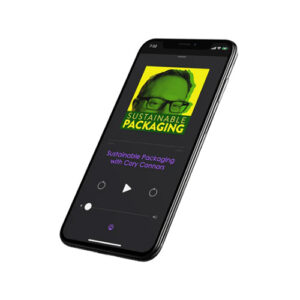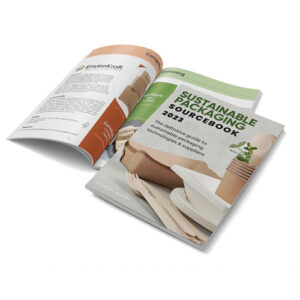Europe's Bold Plan for Re-Use
by Chris Bradley
In November 2022, the European Government proposed a dramatic change to its policy around packaging waste. Declaring waste a “growing source of waste and of consumer frustration” the Commission proposed the Packaging and Packaging Waste Regulation (PPWR) to replace its existing directive with rules that are both significantly stronger and more enforceable than what exist today. The goal is noble–to reverse the ever-increasing amount of waste generated by consumer packaging. With a potentially staggering impact on manufacturers, companies around the world are working to understand, influence and respond to the changes that lie ahead.The Impetus
Today, the average European generates more than half a ton of waste each year, and more than a third of that waste comes from packaging. And even though recycling rates have increased in the EU, they are being outpaced by the amount of waste that is generated. According to the impact assessment published alongside the PPWR proposal, unless action is taken, the volume of plastic waste generated in the EU will increase by 46 percent by 2030 and by 61 percent by 2040. Proponents of the PPWR argue that new regulations are required to achieve a reversal of this untenable trend.
PPWR Goals and Re-Use & Refill Systems
The PPWR has three major areas of focus:
- Reducing packaging waste;
- Decreasing barriers to recycling “circularity” (e.g. by making more packaging recyclable); and
- Decreasing the use of “virgin” materials (e.g. new plastics, paper that’s not made of recycled material, etc.)
To achieve the first objective of reducing packaging waste, the PPWR looks to promote “re-use and refill” types of packaging, setting specific targets for various packaging formats.
For example, it targets:
- Beverage containers that are filled on- site (e.g. at quick-serve restaurants, convenience stores, etc.)
- Food containers designed for take- away and/or ready-to-eat meals
- Wine
- Beer and other single-serve alcoholic beverages (other than wine)
- Non-alcoholic beverages such as soda, bottled water, fruit drinks, ice tea, etc.
For each of the product categories above, the PPWR sets a target for what percentage should be part of a refill/re-use system by both 2030 and 2040. For example, for food containers the target is 10 percent by 2030 and 40 percent by 2040. For wine, it’s 5 percent by 2030 and 15 percent by 2040.
Changing products from single use to re- use and refill will have a significant impact on both product manufacturers and consumers. Deposit return systems, where consumers pay a fee upon purchase that is reimbursed once the package is returned, have been proven to reduce waste, but these systems come with challenges.
From a business model perspective, significant capital investment will be required as companies change the way their products are both packaged and used. There are logistical considerations of course. For example, how will the used packaging be collected and brought back to the manufacturer? How much physical space will the collection systems require and where will these systems live? How will it all be tracked?
Driving consumer adoption is another challenge that will need to be addressed. Any behavior change requires work, and in this case consumers, many of whom are already time- and attention-strapped, may be asked to do something that is less convenient and more time consuming than what they are doing today. To drive the level of adoption needed to meet the targets, solutions will have to be both incredibly easy and also somehow rewarding for consumers.
Health and safety concerns will also need to be addressed. Re-using containers requires proper sanitization and handling, and consumers will need to be confident that the used containers are up to their standards of hygiene.
While there are many products that could leverage re-use and refill systems, to meet the targets the initial focus will likely need to be on high-volume, high-velocity products that will enable systems to scale quickly. Eggs and milk, for example, may be “low hanging fruit” that packaging manufacturers choose to tackle first.
While the PPWR is a European regulation that technically only impacts products used in EU nations, it will undoubtedly have a ripple effect around the world. Manufacturers will inevitably need to streamline, as it’s often impractical if not infeasible to manage dramatically different packaging and processes for each region of export. Regardless, some may see the PPWR as an indicator of what is to come around the world, and prefer to be prepared for that eventuality. As Economist author William Gibson famously said twenty years ago: “The future is already here. It’s just not evenly distributed yet.”
Related Articles

Choosing the Right Stretch Film for Your Application
Oftentimes, customers evaluate the purchase of stretch film based on the cost of the roll. But in reality, the main driver of stretch film costs is actually the cost of wrapping the pallet instead. If you have not evaluated the stretch wrapping process in your warehouse, your company could be missing out potential savings.

Cold Chain Packaging Recycling Instructions
TempSafe™ thermal packaging products are easy to recycle. The guidelines we outline below are intended for general guidance. For proper recycling requirements in your area, please consult with your local municipality for further instructions.
Want to learn more about
Sustainable Packaging?
We have created some resources to guide you in your transition to sustainable packaging:
Sustainably Packaged Magazine
Learn More >>
Sustainable Packaging Podcast With Cory Connors
Cory chats with industry leaders about sustainable packaging options, new products, and how we can improve packaging sustainability.
Sustainable Packaging Sourcebook
Register Now >>




